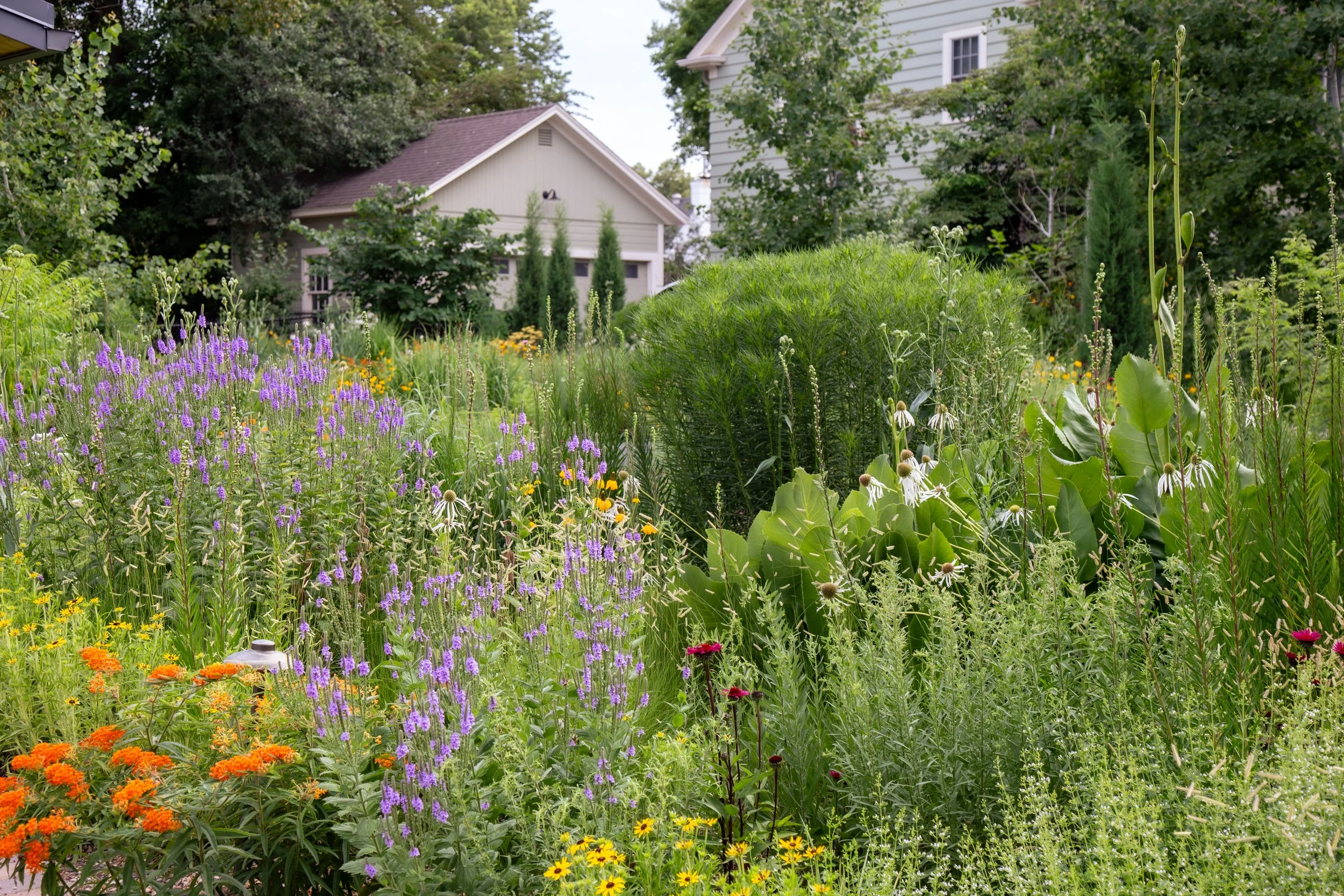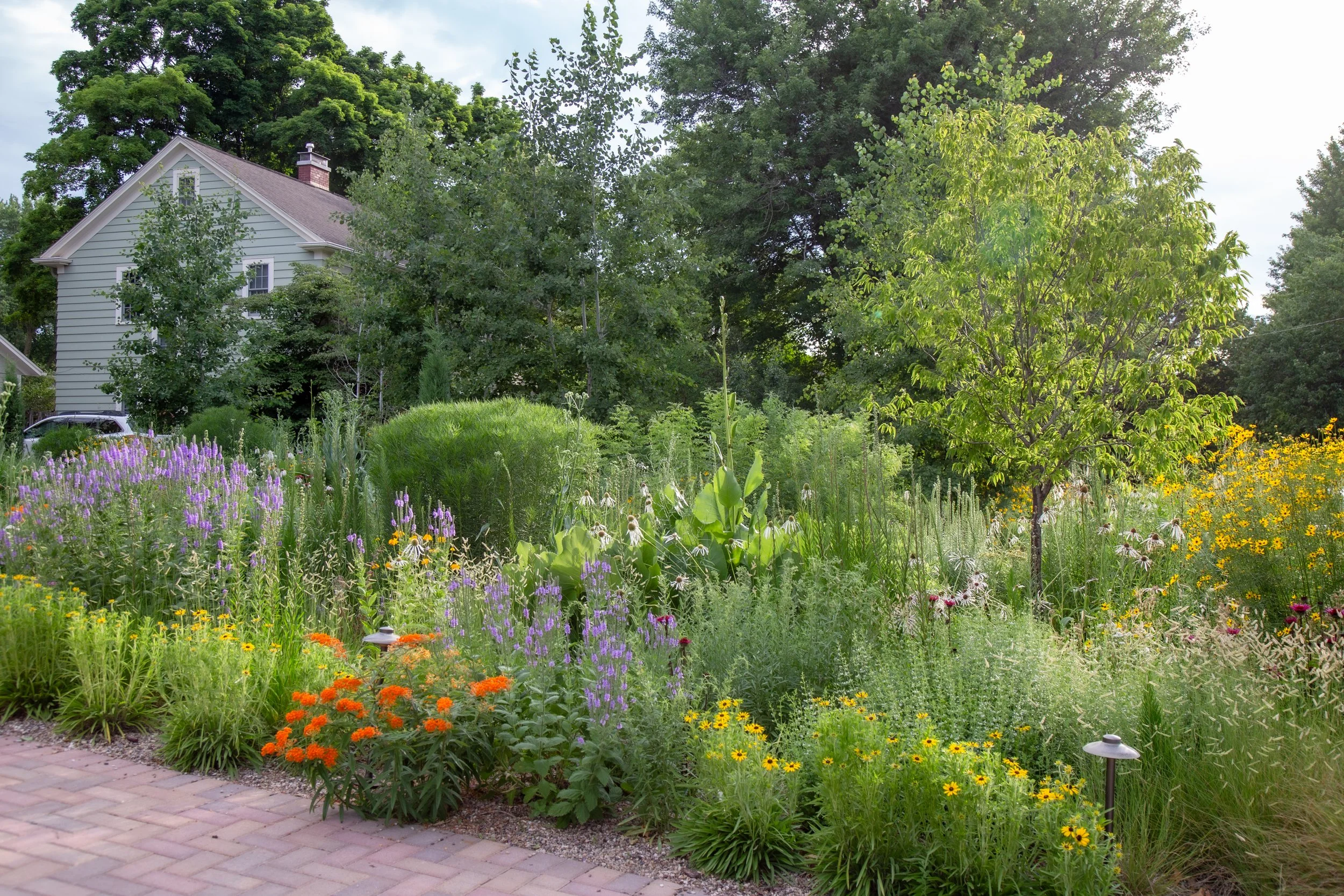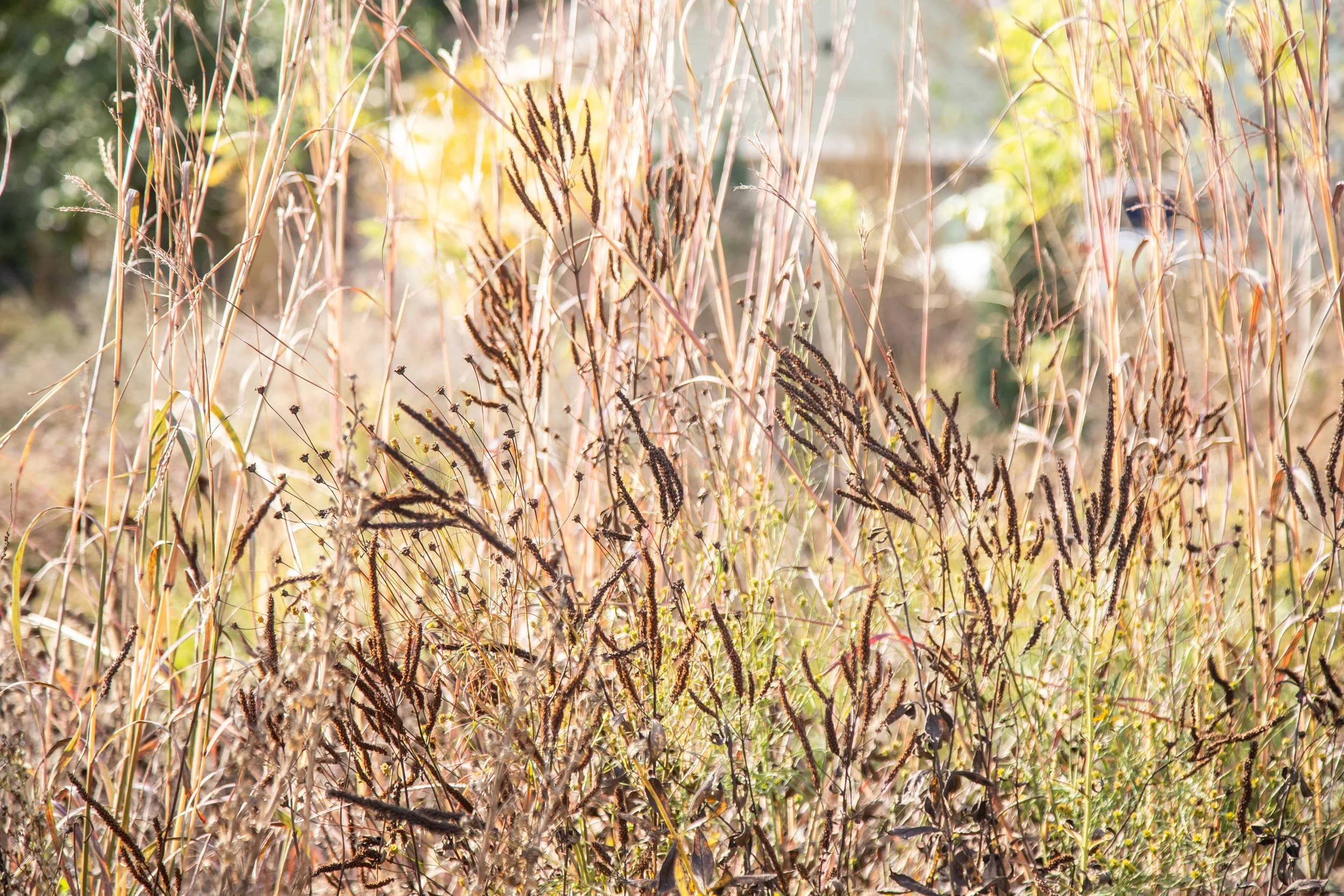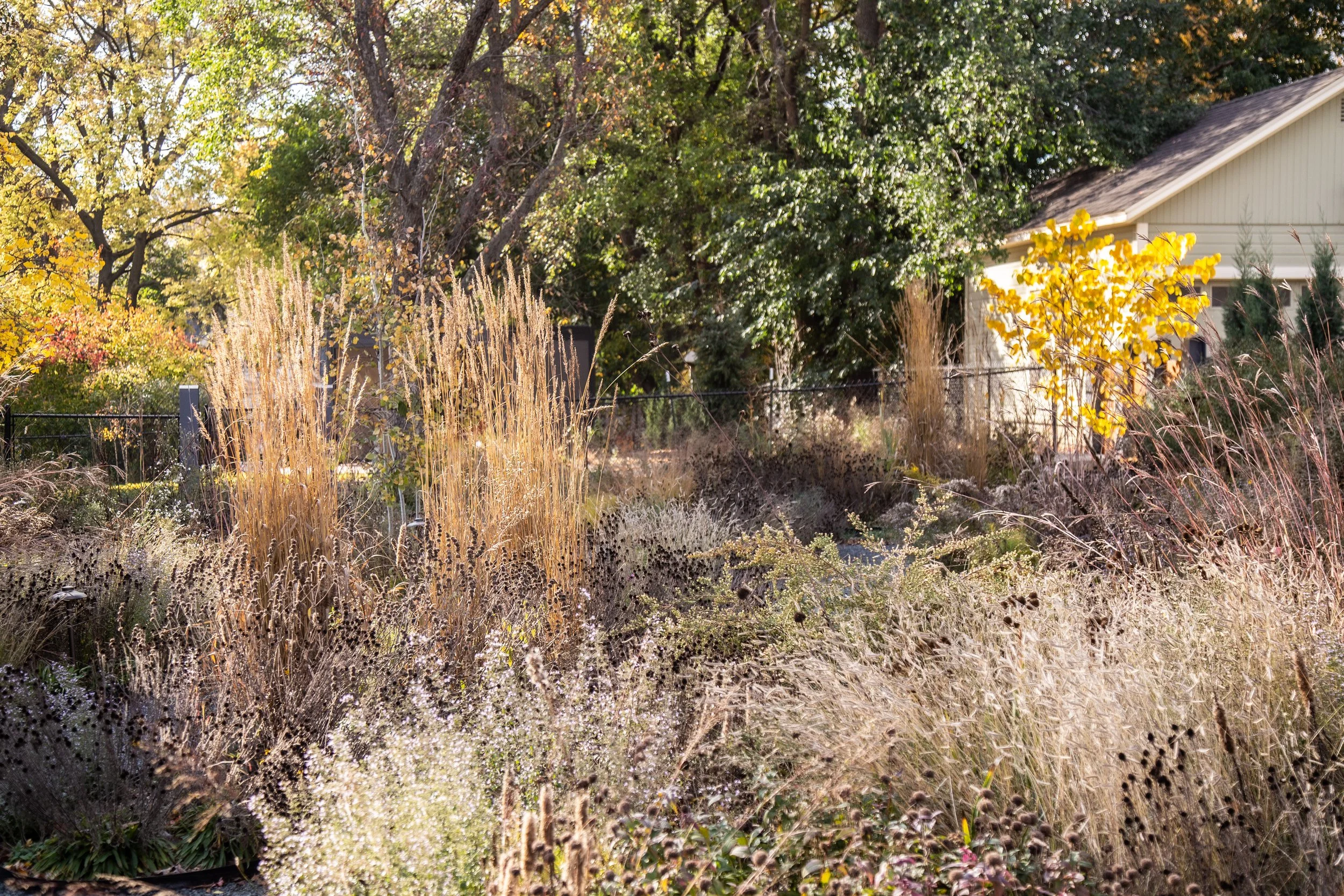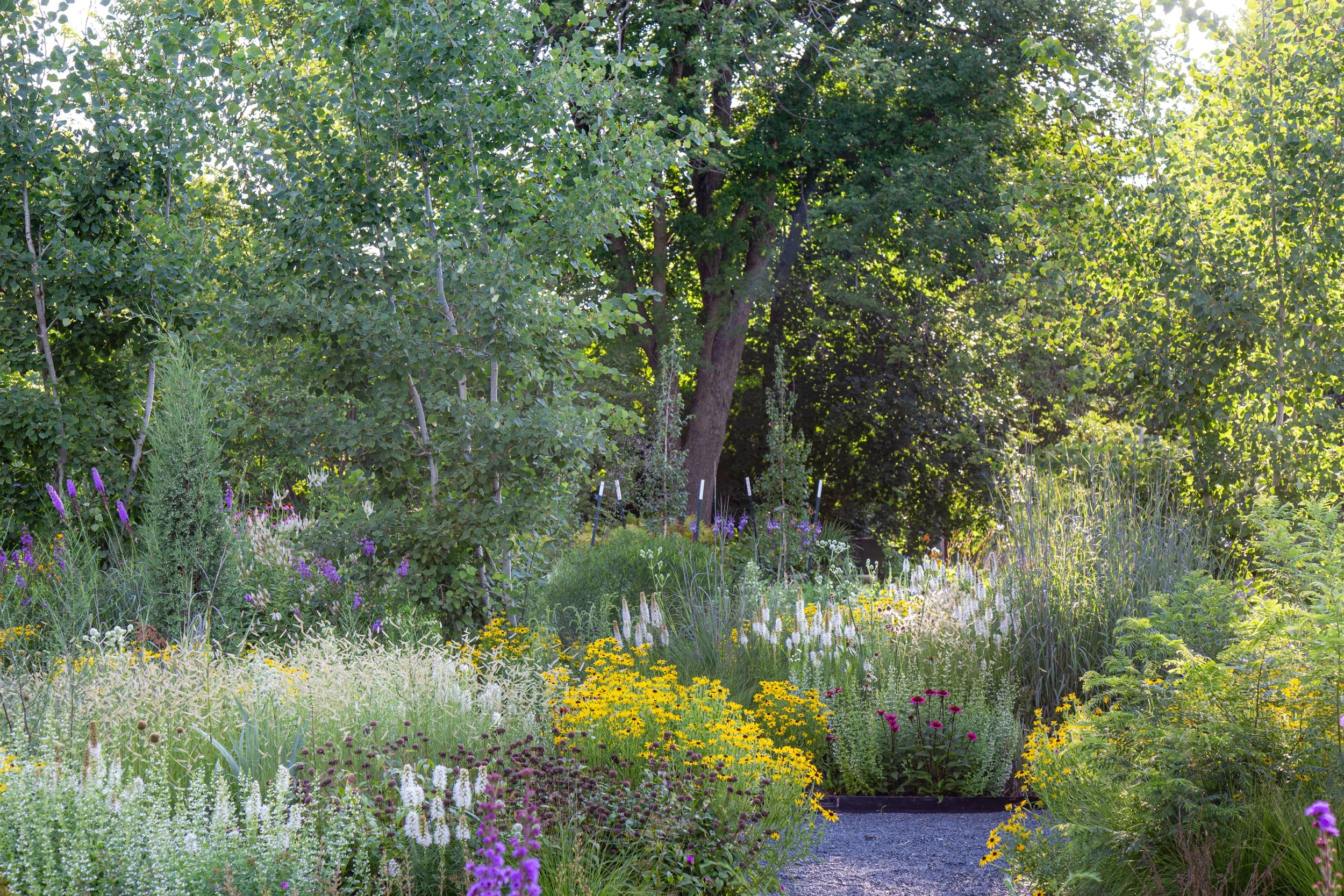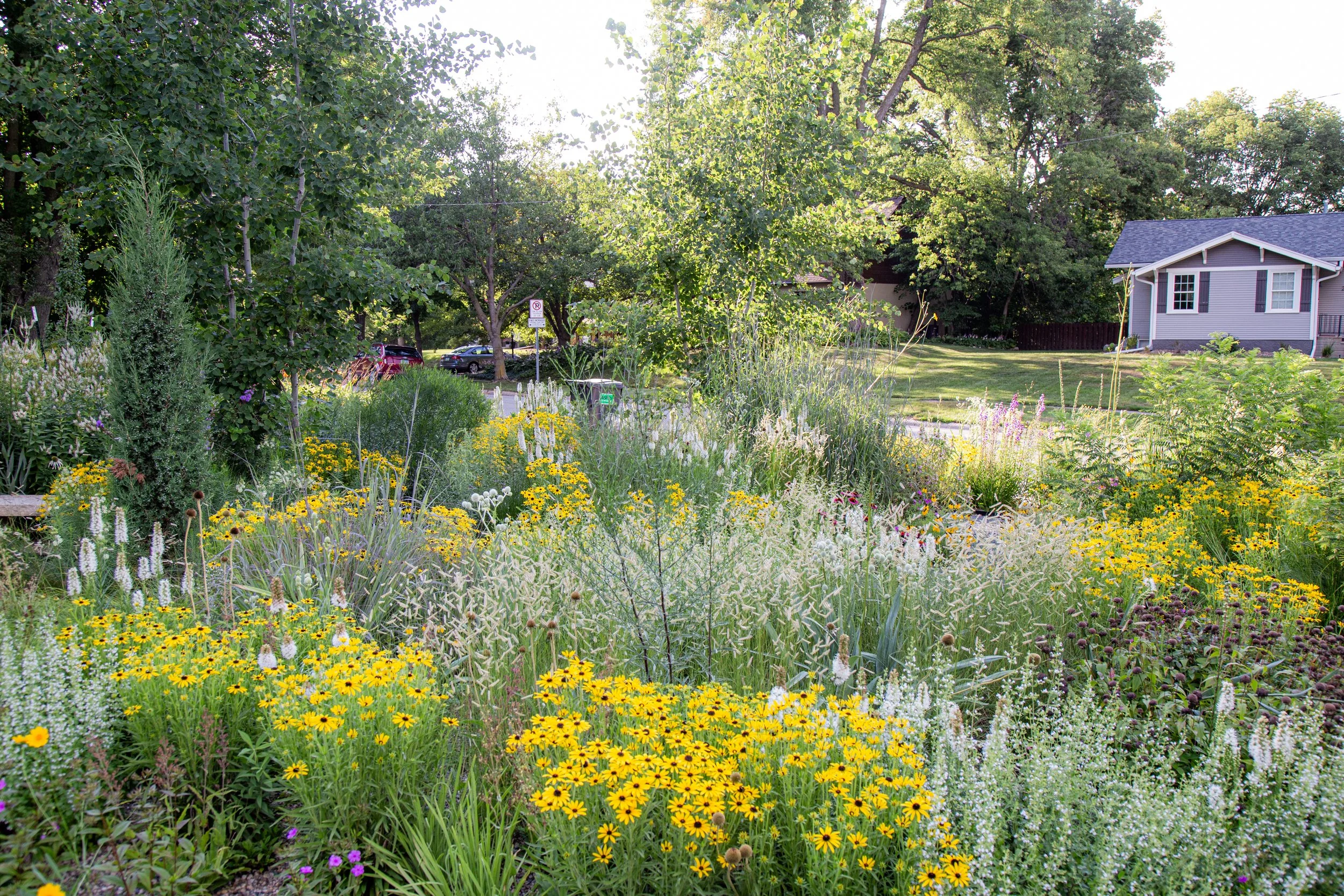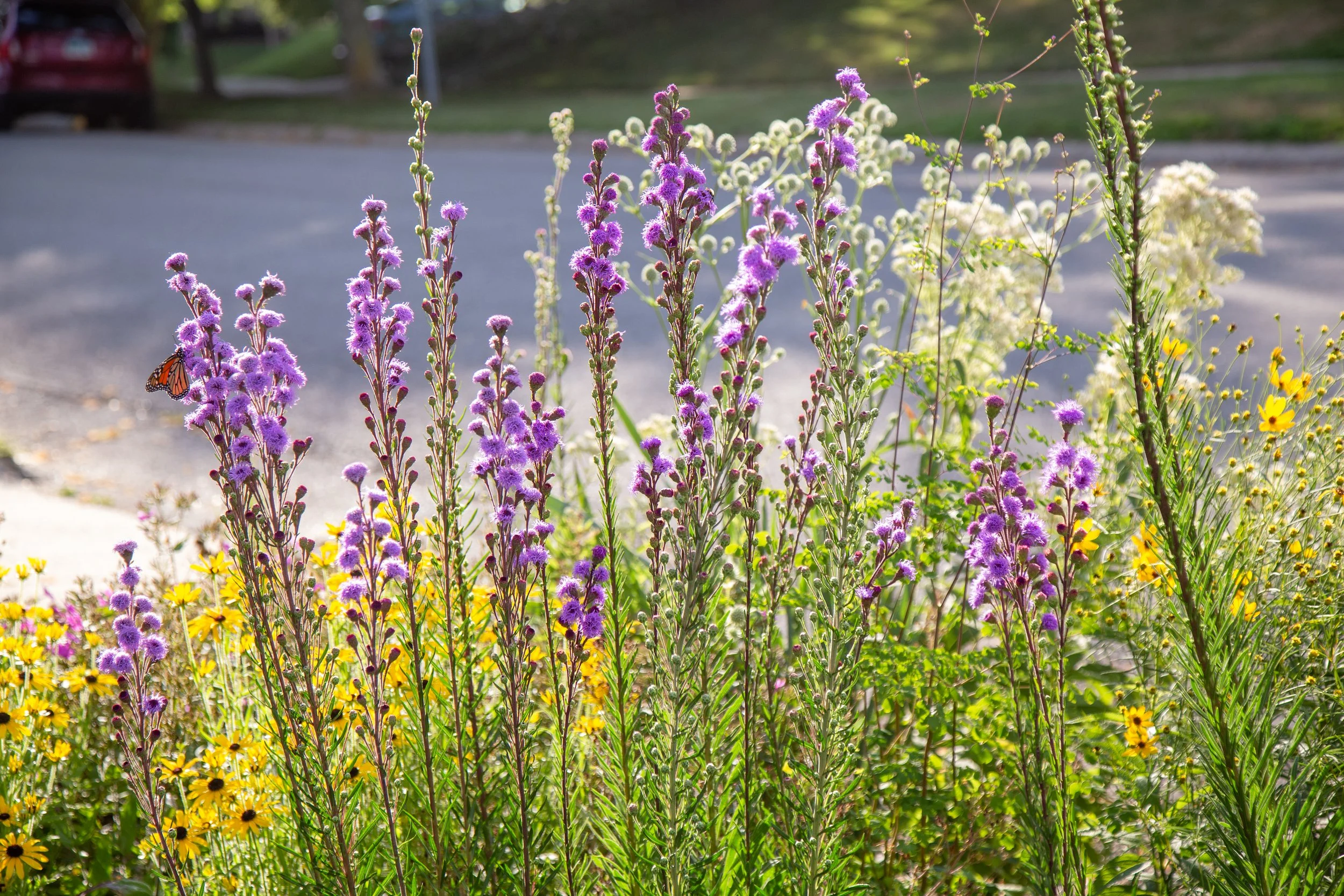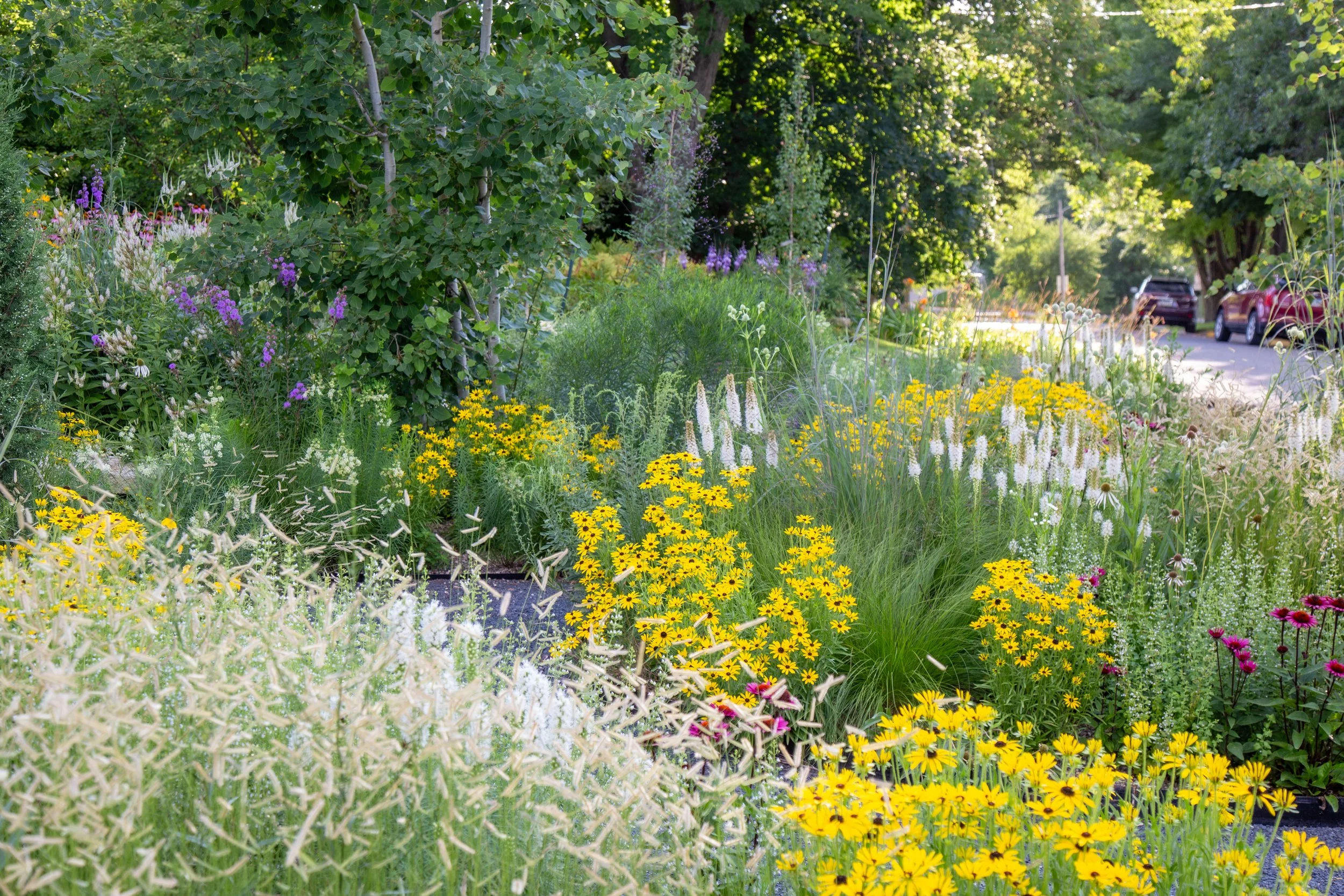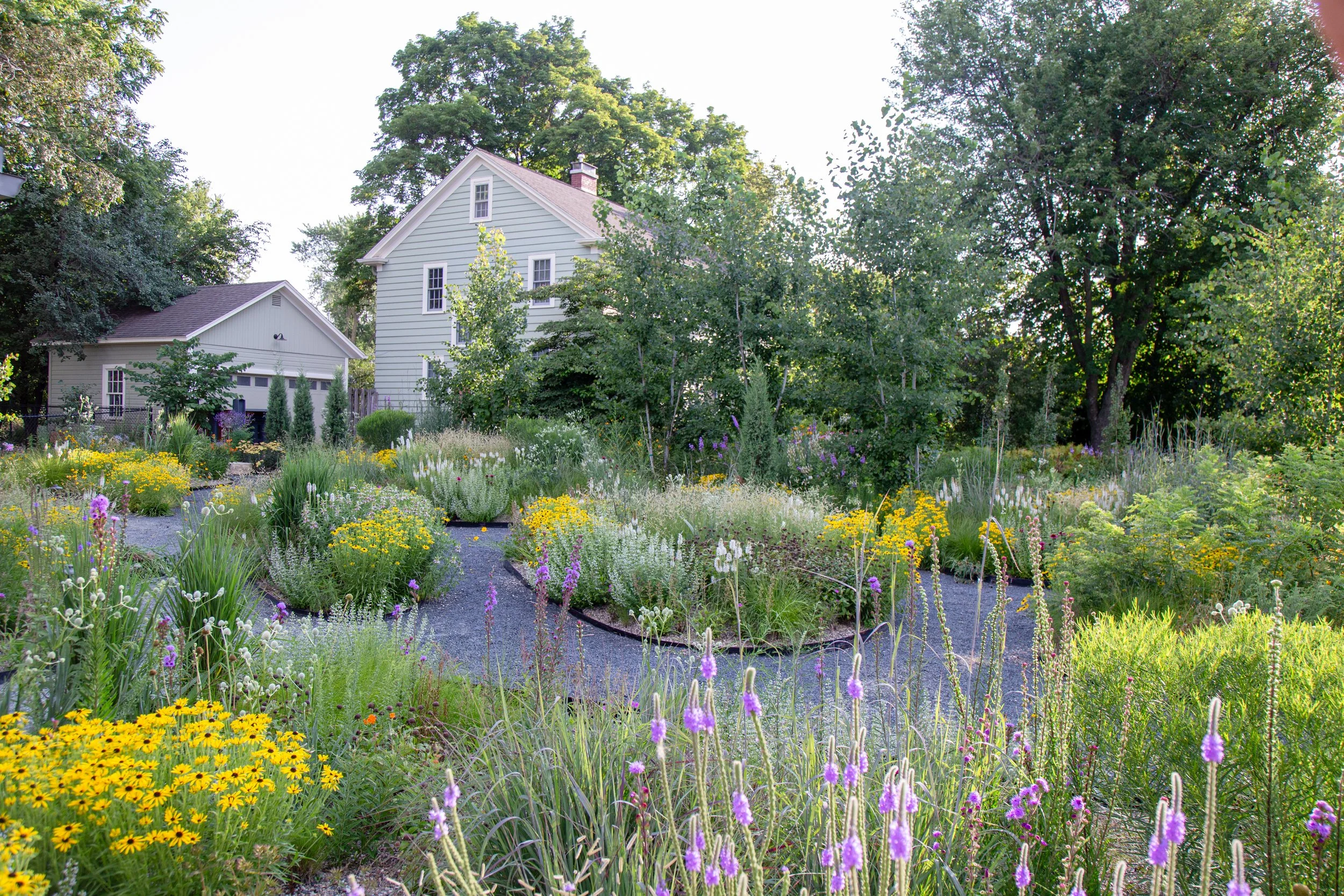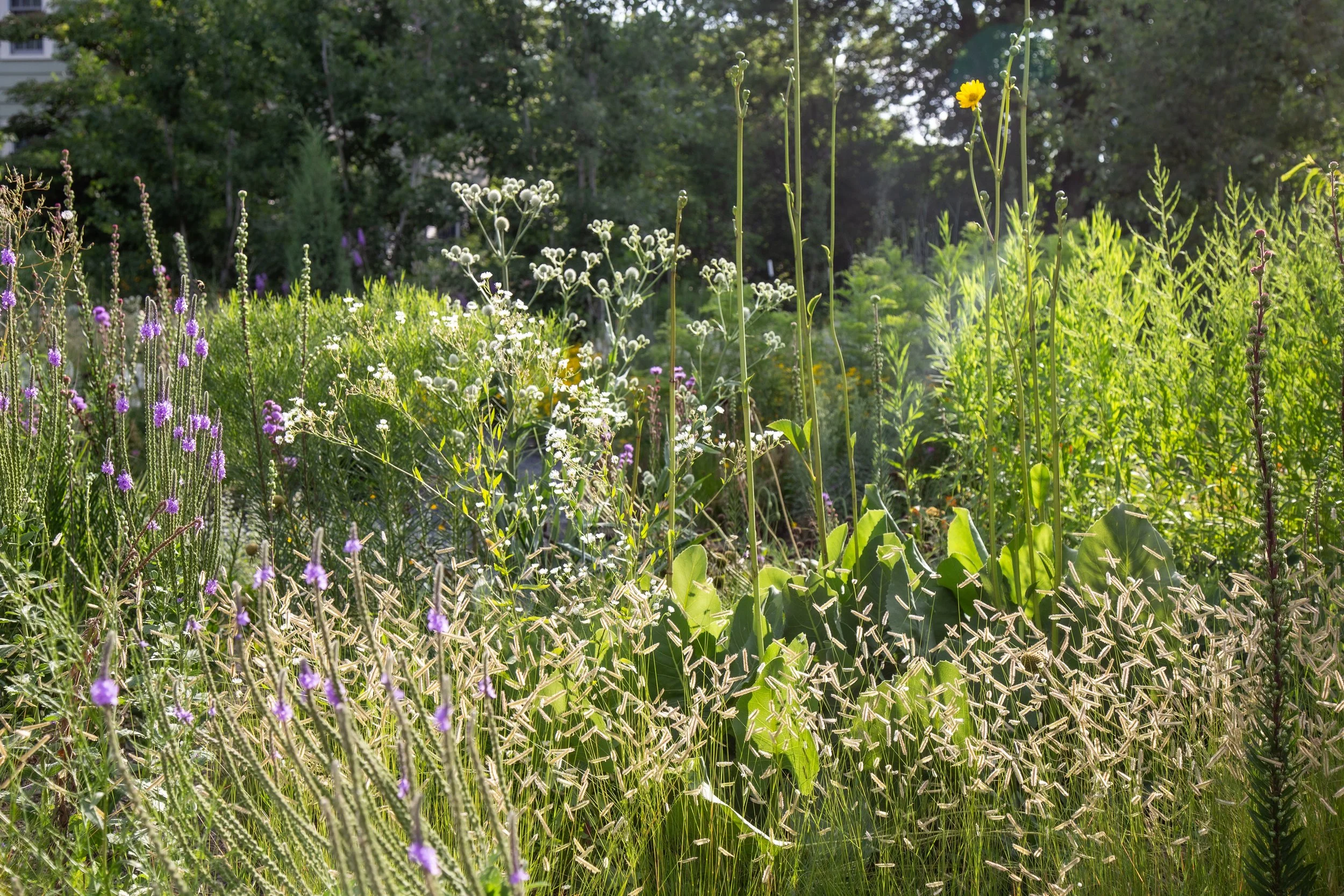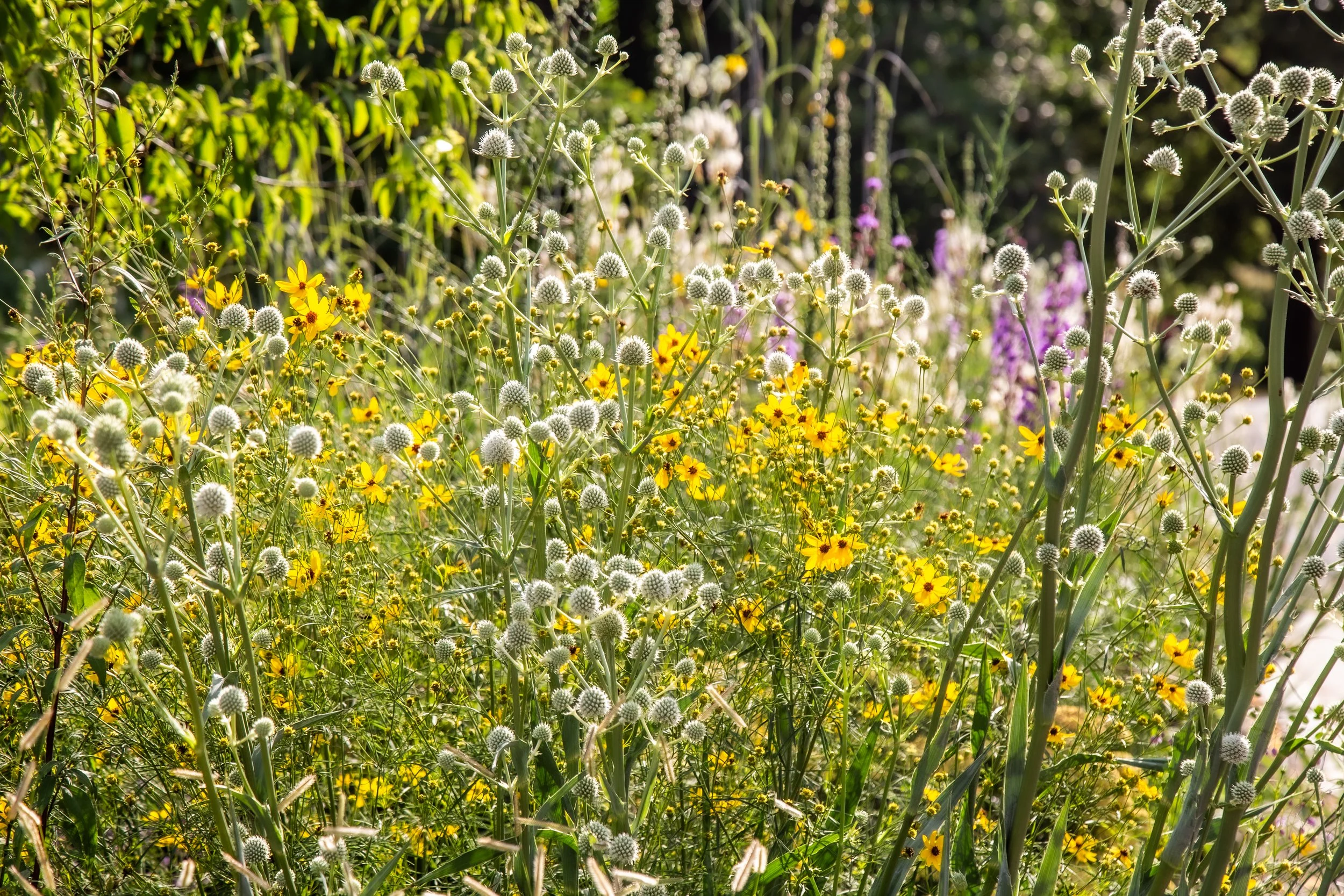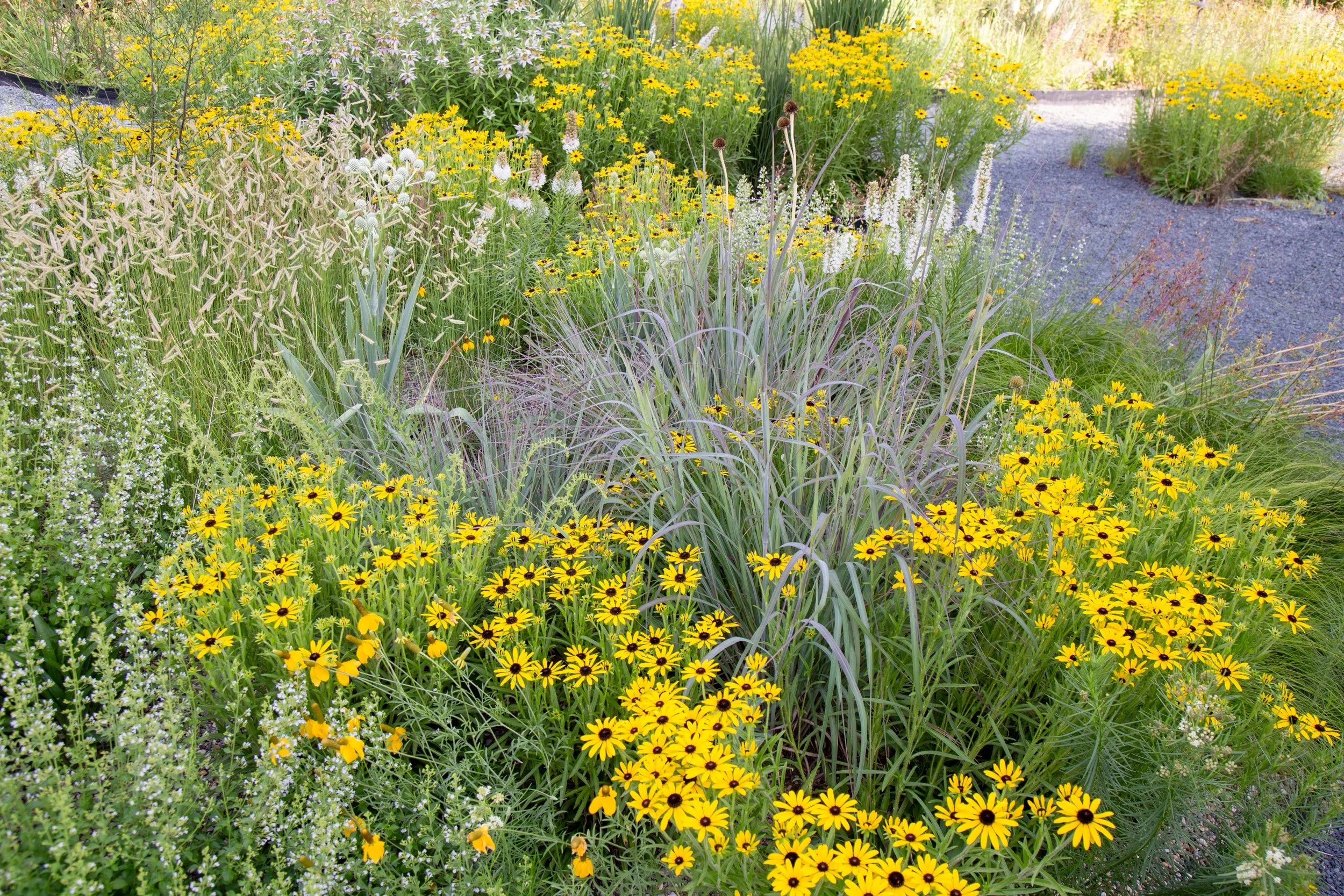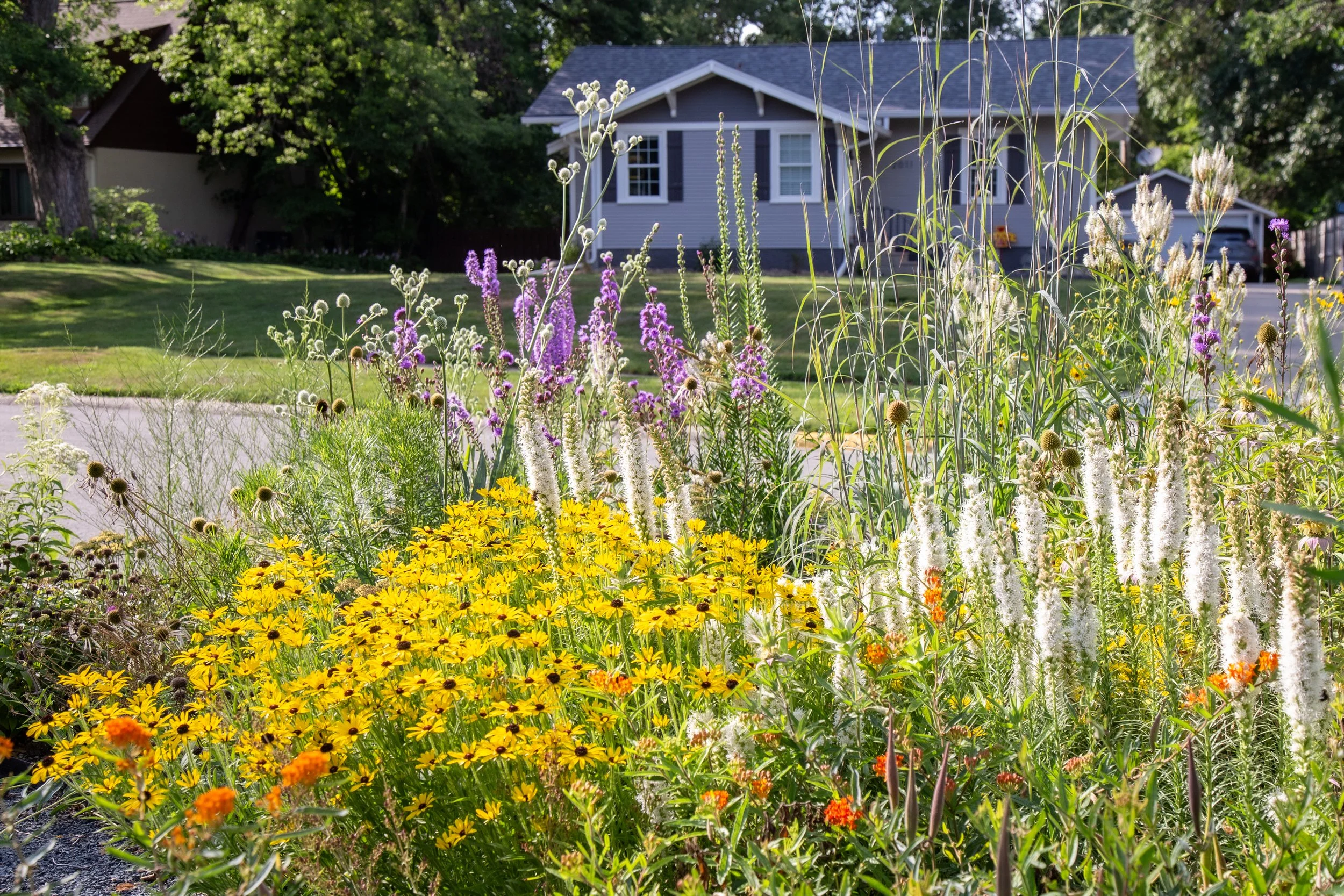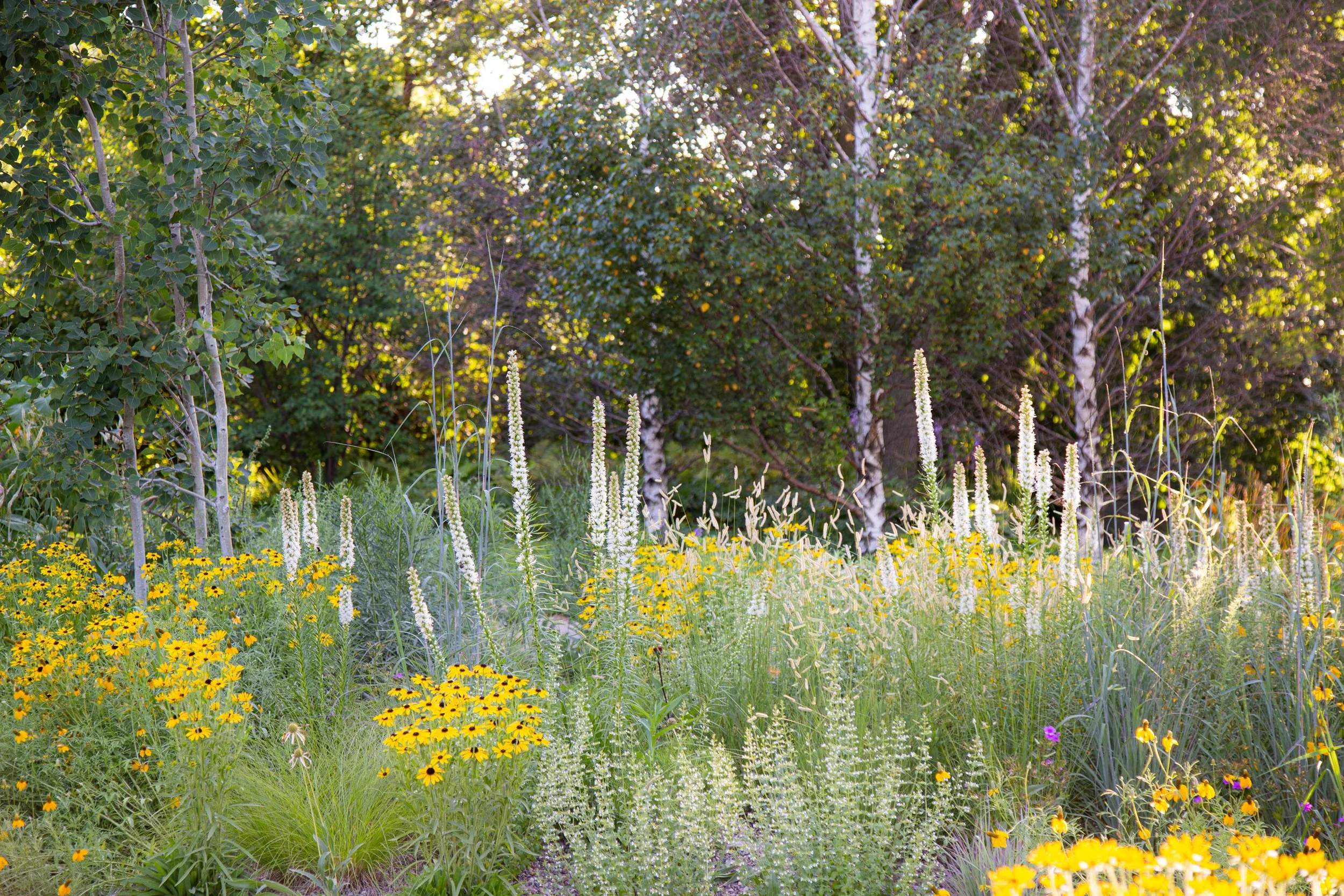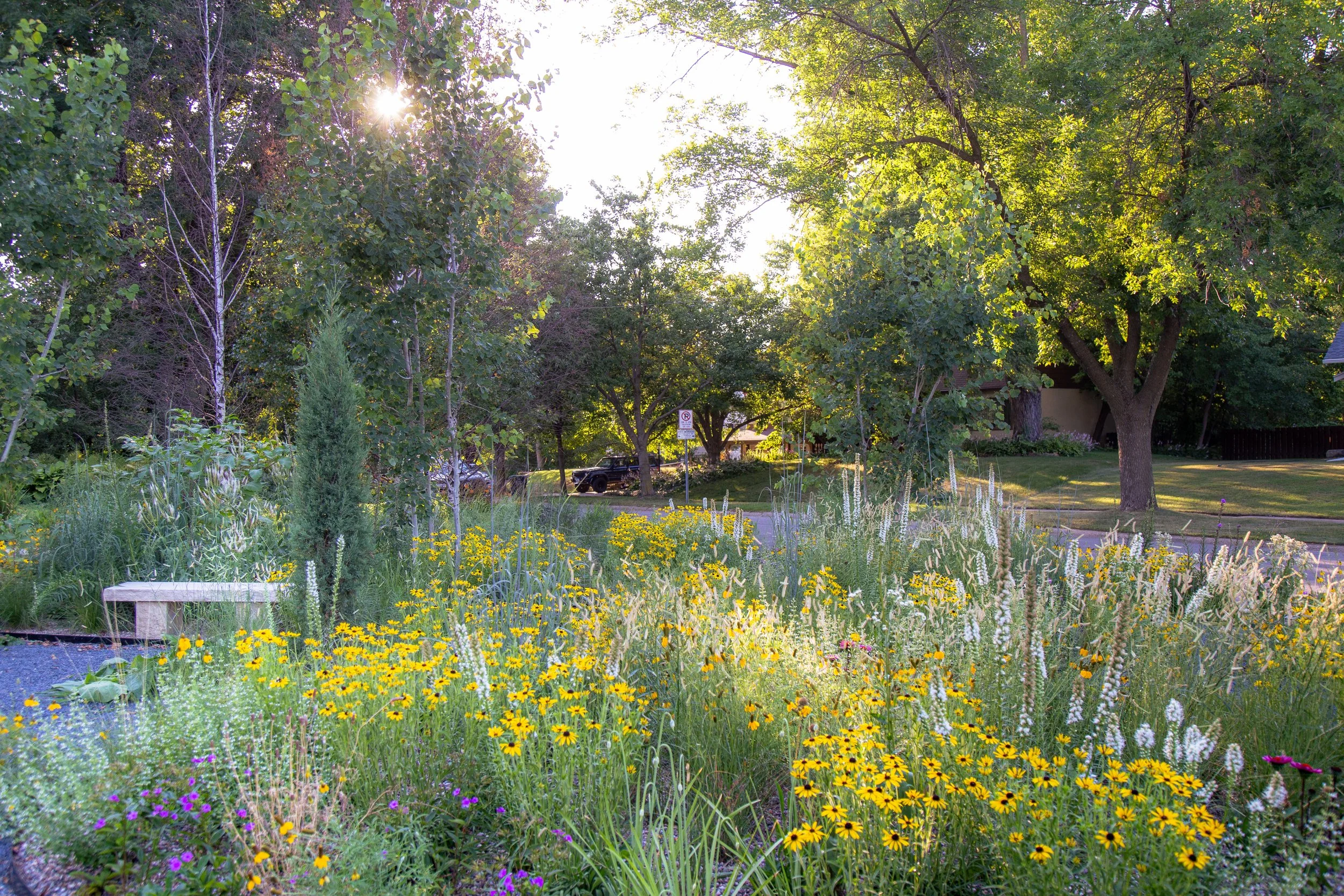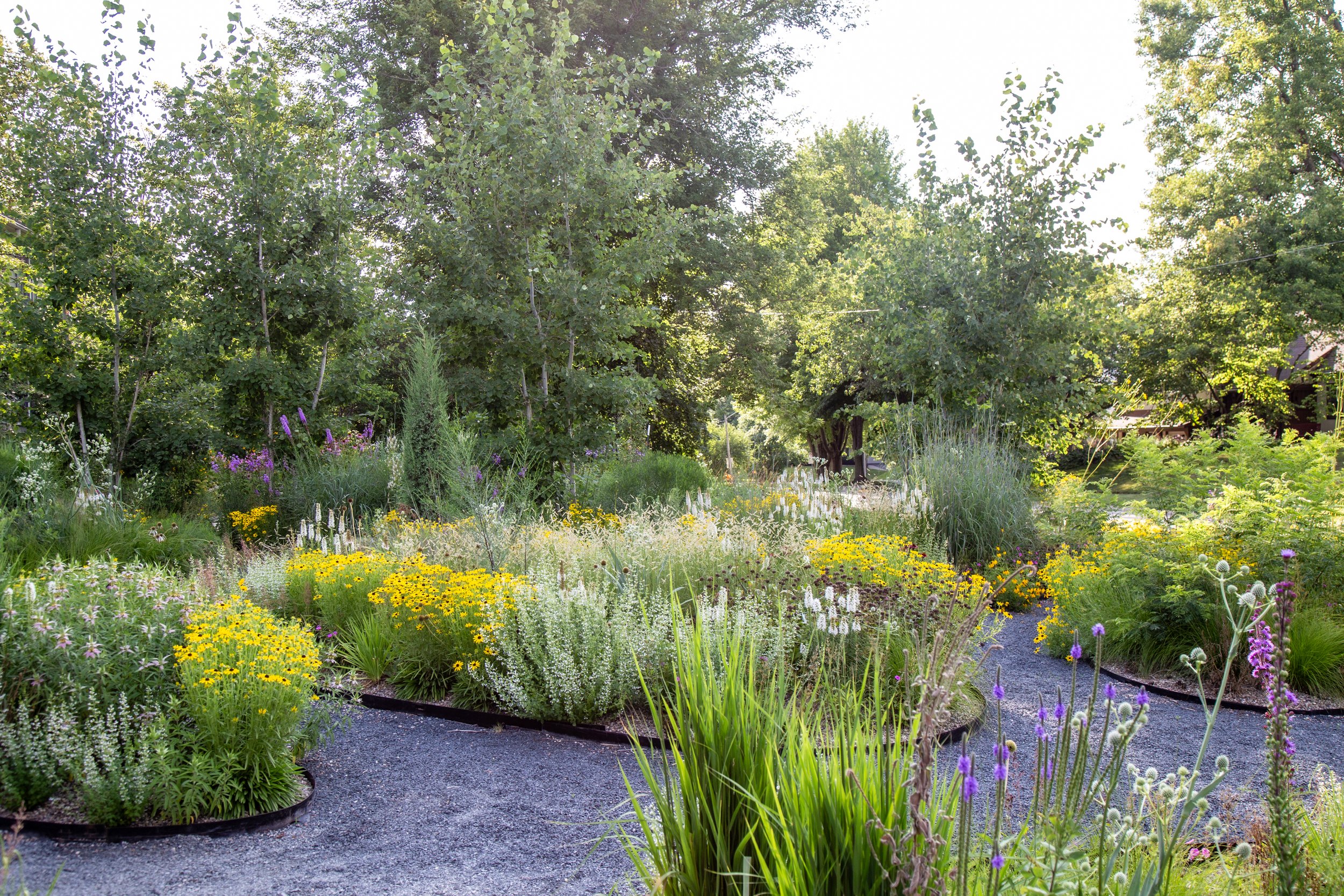
Landscaped Prairie
Winner of the 2023 Landscape Design Award of Merit from the Perennial Plant Association
Inspired by the site's sandy soil and hilltop position, I translated a dry prairie plant community into an immersive and atmospheric garden experience. Using approximately 85% native species, the plantings flow along a curvilinear axis populated with ovoid-shaped island beds. In sites with glacial histories, my mind often wonders to drumlins and various other topographies influenced by glacial geology. Drumlins kind of look like watermelon seeds or so I’m positing here because the ovoid-shaped planting beds were inspired by the Herman Miller Summer Picnic 1971 poster. Enveloping borders along the property boundaries feature slightly taller, layered plantings to create a sense of privacy and maximize habitat for biodiversity. The gravel pathways deliberately expand and contract in size to maximize the user experience of moving through the plantings while also creating interludes for gathering and lingering. The project was installed as a gravel garden, a planting technique pioneered in Europe in the mid-20th century as a low input, site-specific approach to adapting stressful conditions into gardens. Over 3,700 individual plants were installed in September and October 2021 in approximately five inches of 1/4" pea gravel deposited on top of existing sandy loam. These were watered periodically until frost.
This garden demonstrates resilient, site-specific planting strategies for central Iowa landscapes. While a private garden, the clients were interested in the overall curb appeal and aesthetic in hopes of creating positive change and conversation around prairie in residential settings. They view their garden as an opportunity to demonstrate new strategies for modern landscapes while also remaining colorful, stylish and regionally resonant. The planting includes 57 different kinds of plants (49 of which are native within 250 miles of Ames, Iowa) and illustrates that wilder, naturalistic gardens can be ecologically valuable with head turning curb appeal.
I directed and installed the landscape in collaboration with Country Landscapes (Ames, Iowa) in September and October 2021. Images from 2022-2024.


